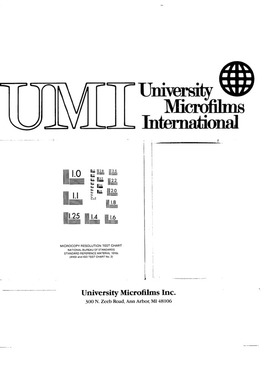| dc.contributor.author | Broyles, Pamela Human, | en_US |
| dc.date.accessioned | 2013-08-16T12:29:25Z | |
| dc.date.available | 2013-08-16T12:29:25Z | |
| dc.date.issued | 1985 | en_US |
| dc.identifier.uri | https://hdl.handle.net/11244/5376 | |
| dc.description.abstract | The results of this study indicated that videotape feedback increased congruency between student and teacher perceptions on some aspects of a public speaking performance. Organization and language were the two areas that reflected increased congruency in all treatment groups. In addition, no differences were found in using immediate and delayed videotape feedback to increase congruency. | en_US |
| dc.description.abstract | To test the first two hypotheses of this investigation, repeated analysis of variance measures were used. A set of Pearson product-moment correlations was calculated to test the third hypothesis. Finally, category analysis was conducted to determine where the least and most congruency occurred between teachers' and students' perceptions on the six areas of the Speech Rating Scale. | en_US |
| dc.description.abstract | The subjects for the study included students enrolled in four sections of an introductory college speech communication course. The experiment also involved three communication instructors and was conducted in a natural classroom setting. Two groups of subjects received immediate videotape feedback following their performances while the other two groups received delayed videotape feedback. | en_US |
| dc.description.abstract | The purpose of this study was to determine whether videotape feedback, provided after a student's public speaking performance, increased the amount of congruency between student self-evaluation and teacher evaluation of that speaking performance. Congruency was determined by comparing student and teacher scores on an adapted version of the Speech Rating Scale developed by Becker (1962). The Speech Rating Scale focused on six aspects of a public speaking performance: organization, language, material, delivery, analysis, and voice. | en_US |
| dc.description.abstract | The analysis of the data gathered in this study relied on the discrepancy scores occurring between student and instructor evaluations of public speaking performances. Discrepancy scores were calculated two ways (total discrepancy and item discrepancy) to determine whether methodology itself made a difference in the results. The researcher found that item discrepancy was more sensitive to variance in scores. | en_US |
| dc.format.extent | vi, 58 leaves ; | en_US |
| dc.publisher | The University of Oklahoma. | en_US |
| dc.subject | Video tapes in education. | en_US |
| dc.subject | Public speaking. | en_US |
| dc.subject | Education, Technology of. | en_US |
| dc.title | The influence of videotape feedback on student and teacher perceptions of a public speaking performance / | en_US |
| dc.type | Thesis | en_US |
| dc.thesis.degree | Ph.D. | en_US |
| dc.note | Source: Dissertation Abstracts International, Volume: 46-12, Section: A, page: 3693. | en_US |
| ou.identifier | (UMI)AAI8602713 | en_US |
| ou.group | Other | |
